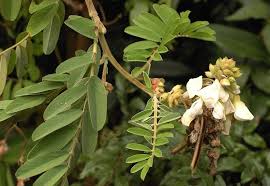
Joseph Wabwire, a sorghum farmer in Busia who decided to change from using synthetic pesticides to natural pesticides pest control method is now recording six bags extra per acre out of his three acres land thanks to the help from colleagues and personal research efforts.
Three years back, the farmer relied heavily on synthetic pesticide-Reldan 40EC to get rid of Aphids and caterpillars. It was effective pesticide but the major down side is that the Aphids adapted to it and this would mean he was to increase on the dosage for his sorghum or get a stronger pesticide. This turned out to be expensive for him.
“I used to get 59-60 bags of 90 kilos on an acre while I was using the synthetic pesticides but now I get 66 bags per acre,” says Wabwire, “this increase in the number of bags has really helped in increasing my income,” he adds.
He is now using an extract from tephrosia plant that grows naturally in the area and are mostly assumed to be weeds to make his home-made pesticide.
RELATED CONTENT: How to control bruchids in beans without use of pesticides
Through his online research and consultation with other farmers in the area Wabwire decided to use the plant because unlike Mexican marigold and Lonchocarpus which are also effective tephrosia is readily available in his farm.+
“At first I was afraid of just using a natural product that I had only heard about, since if it did not work out, it would mean I would have made a very big loss and if worked this would be the new way for me,” he says.
RELATED CONTENT: How to control tomato pests and diseases without use of pesticides
How to prepare the natural pesticide
First, pick tephrosia leaves must be dried in shade as this will preserve the strength of their chemical content. The dried leaves are then ground and mixed with water to for the first solution.
Grind 500 grams of chili, boil it and let it cool. Then 30 grams of laundry soap is added to solution and let for some time dissolve.
The two solutions are then mixed to make a pesticide which can be sprayed on crops to control aphids, and caterpillars.
“Such a solution normally stays for two days, meaning I make it on need basis since I don’t want to use any form of preservatives. I normally spray the sorghum once a week. Using this kind of pesticide is really affordable, since I get the raw materials directly from my farm,” says Wabwire.
He has seen a lot of change in the quality of the sorghum ever since he started using this form of pesticide. Some of the benefits are better and healthier plants “my produce is healthy, the soil fertility of my farm has improved and I have an increase in the number of 90Kg bags from every acre of land,” he continues.
RELATED CONTENT: Pesticide that doubles fruits, vegetables and grain yields
Wabwire admits that before he started using the natural pesticide he would get roughly Sh800, 000 but when he started using it his proceeds have increased to Sh1.2m per growing season.
“Another benefit of using this pesticide is that as compared to the synthetic pesticides that end up having residue which at times makes crop produce to be rejected, the tephrosia pesticide does not leave residue on the crop produce,” Wabwire adds. “I would like to urge farmers to take up this form of pest control since; it is cheap and good for the environment”.